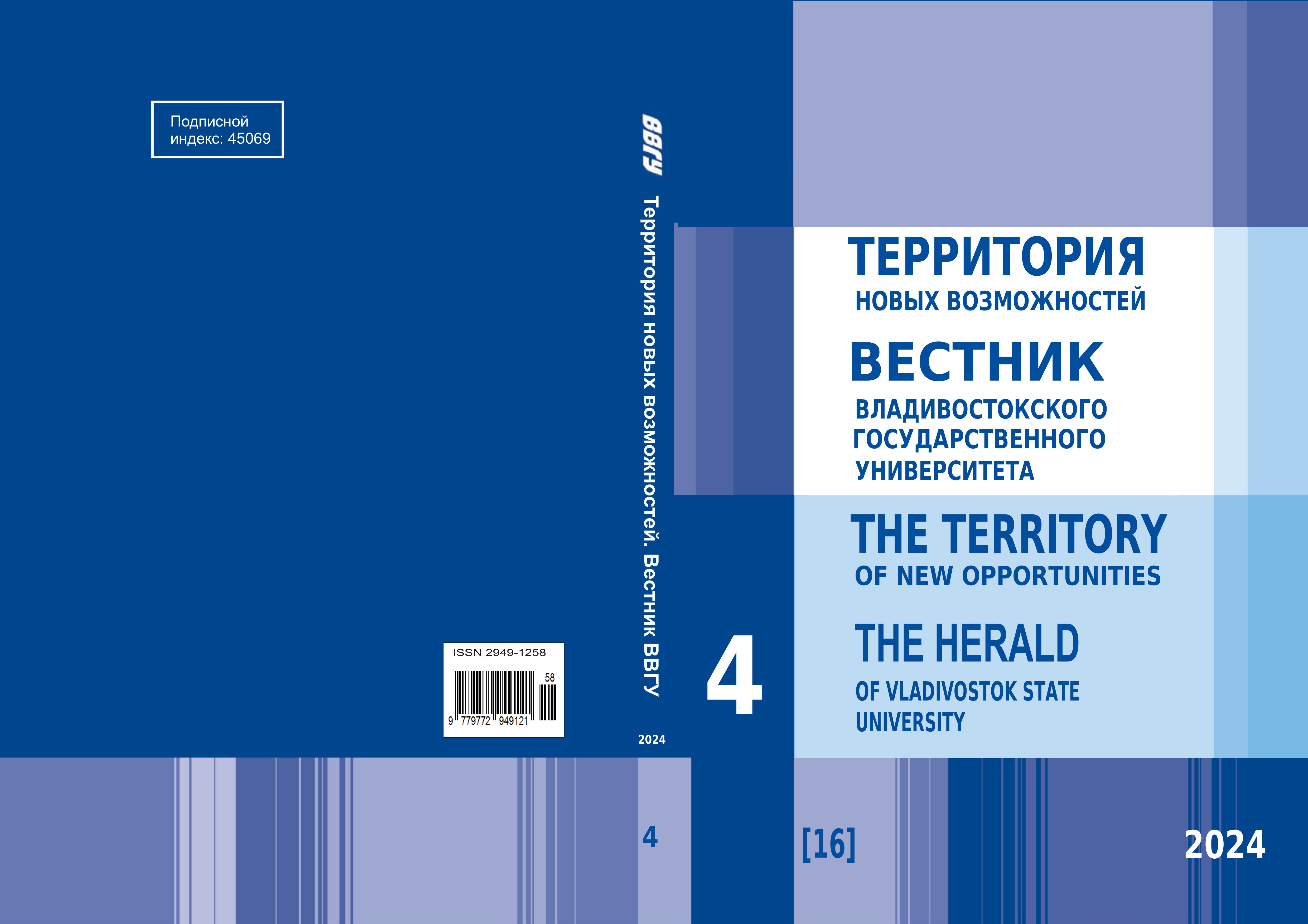Vladivostok, Vladivostok, Russian Federation
employee
Vladivostok, Vladivostok, Russian Federation
The article deals with the development of the conceptual apparatus referring to physical culture and sports issues. In the context of healthy lifestyle popularization and focus on the comprehensive human development in many countries, physical education and sports are becoming a complex system of social relations, combining the interests of the state, society, and economy. The article aims at the theoretical understanding of basic concepts in the field of physical education and sports which are used in the relevant scientific literature. The subject of the research is «physical culture» and «sport» concepts, as well as other concepts associated with physical education and sports as a sphere of economic activity, a branch of economy. On the base of the meaningful analysis of scientific literature the authors make efforts to clarity and universalize the considered concepts, ensuring logical consistency of theoretical provisions that justify the today’s development of physical education and sports. The article provides the meaning of such concepts as «physical culture», «sports», «physical education system», «physical education field», «sports industry» «sports economy». The authors also determine features of using these concepts in today’s science and practice.
physical culture, physical development, sports, sphere of physical culture and sports, physical education system, physical education field, sports industry, sports economy
1. Decree of the President of the Russian Federation of 07.05.2024 no. 309 "On the national development goals of the Russian Federation for the period up to 2030 and for the future until 2036". Government of the Russian Federation. URL: http://publication.pravo.gov.ru/document/0001202405070015? index = 2 (accessed date: 13.07.2024).
2. Grigoryan Y.G., Bogatyreva K.V. Physical culture: the conceptual history of the term. Physical culture, sports and youth policy in the face of global challenges: mater. International. scientific congress dedicated to the 90th anniversary of the Institute of Physical Culture, Sports and Youth Policy of UrFU. Yekaterinburg; 2023. P. 174–181. EDN: https://elibrary.ru/UVTCRK
3. Dolgikh N.V. On the origin of the term "sport" and other backbone concepts. International Research Journal. 2022; 5-4 (119): 24–27. DOI: https://doi.org/10.23670/IRJ.2022.119.5.109; EDN: https://elibrary.ru/HZWWCG
4. Peredelsky A.A., Konikov S.L. Ancient Greek physical education and agonism, ancient Roman sports as an ontological basis for the genetic definition of the concepts of "physical culture" and "sports". Physical culture: education, education, training. 2010; (5) 59–64. EDN: https://elibrary.ru/NCGSPF
5. Gastev A.K. How to work. Practical introduction to the science of labor organization. Moscow: Economics; 1972. 478 p.
6. Ponomarev N.I. Social functions of physical culture and sports. Moscow: Physical education and sports; 1974. 310 p.
7. Big encyclopedic word. URL: https://gufo.me/dict/bes?page=3&letter=%D1%84 # (accessed date: 12.07.2024).
8. Kuramshin Y.F. Theory and methodology of physical culture. Moscow: Soviet Sport; 2010. 320 p. EDN: https://elibrary.ru/QXWHTH
9. Federal Law "On Physical Culture and Sports in the Russian Federation" of 29.04.1999 no. 80-FZ (latest edition). URL: https://www.consultant.ru/document/-cons_doc_LAW_22930/ (accessed date: 13.07.2024).
10. Federal Law "On Physical Culture and Sports in the Russian Federation" of 04.12.2007 no. 329-FZ (latest edition). URL: https://www.consultant.ru/document/-cons_doc_LAW_73038/ (accessed date: 13.07.2024).
11. Sysoev A.V., Sedochenko S.V., Savinkova O.N. Conceptual analysis of the terms "physical culture" and "sports ". Scientific notes of the University of Lesgaft. 2019; 9 (175): 290–294. EDN: https://elibrary.ru/SLQUSB
12. International Charter of Physical Education, Physical Activity and Sport. UNESCO Digital Library. URL: https://unesdoc.unesco.org/ark:/48223/pf0000235409_rus (accessed date: 10.07.2024).
13. Sports Charter of Europe//Central Branch Library for Physical Culture and Sports. URL: http://lib.sportedu.ru → Press → SFA (accessed date: 10.07.2024).
14. European manifesto "Young People and Sports" (adopted in May 1995 to supplement and expand the principles of Article 5 of the European Sports Charter). Central Branch Library for Physical Culture and Sports. URL: http://lib.sportedu.ru/-GetText.idc?TxtID=1543 (accessed date: 10.07.2024).
15. Zeveleva E.A., Zabaykin Yu.V., Kolosov V.A. Development of municipal social programs in the field of development of physical culture and sports. Economy: yesterday, today, tomorrow. 2020; 10 (11A): 148–159. DOI: https://doi.org/10.34670/AR.2020.25.31.015; EDN: https://elibrary.ru/LCRQGL
16. Shubarin I.V. Organizational and economic mechanism for the development of services in the field of physical culture and sports: ref. dis.... cand. econ. Sciences / Ural State Academy of Physical Culture. Chelyabinsk; 2004. 24 p. EDN: https://elibrary.ru/NHVSTV
17. Pochinkin A.V. Management in the field of physical culture and sports. Moscow: Sport; 2016. P. 278.
18. Solntsev I.V. The role of the sports industry in the development of the modern economy. Economic and social changes: facts, trends, forecast. 2012; 6 (24): 155–167. EDN: https://elibrary.ru/PMXCXJ
19. Zhou L., Ke Z., Waqas M. Beyond the Arena: How sports economics is advancing China's sustainable development goals. Heliyon. 2023; 9 (7): e18074. DOI: https://doi.org/10.1016/j.heliyon.2023.e18074; EDN: https://elibrary.ru/FQRCJR
20. Wang R., Liang T. The «Belt and Road» Initiative and China’s sporting goods exports: basic characteristics and policy evaluation. Heliyon. 2024. Vol. 10. Is. 13, e33189. DOI: https://doi.org/10.1016/j.heliyon.2024.e33189; EDN: https://elibrary.ru/QDAALC
21. Wang Yan, Wang Yue, Li M.-X. Regional characteristics of sports industry profitability: Evidence from China’s province level data. Physica A: Statistical Mechanics and its Applications. 2019; 525 (1): 946–955.
22. Santomier J.P. Digital Transformation: The Global Sport Industry. Reference Module in Social Sciences. 2024. 27 May. URL: https://www.sciencedirect.com/science/article/-abs/pii/B9780443137013002097 (accessed date: 13.07.2024).
23. Bar-Eli M., Krumer A., Morgulev E. Ask not what economics can do for sports – Ask what sports can do for economics. Journal of Behavioral and Experimental Economics. 2020; (89): 101597.
24. Sports industry development strategy until 2035: approved by order of the Government of the Russian Federation of June 3, 2019 no. 1188-r. Government of the Russian Federation. URL: http://static.government.ru → media (accessed date: 10.07.2024).
25. Trushina E.A., Sergeev A.A. Development of the sports industry in Russia. Interactive science. 2016; (10): 165–167. DOI: https://doi.org/10.21661/r-115278; EDN: https://elibrary.ru/XDELKX
26. Malygin A.V. Marketing in the sports industry: for those in the game. Moscow: Publishing solutions; 2018. P. 420.
27. Lednev V.A. Sports industry. Moscow: Synergy University. URL: https://www.ebiblio.ru/book/bib/23_CSM/Industriya_sporta/pp_20_noyabrya_2015_lednev.pdf (accessed date: 12.07.2024).





